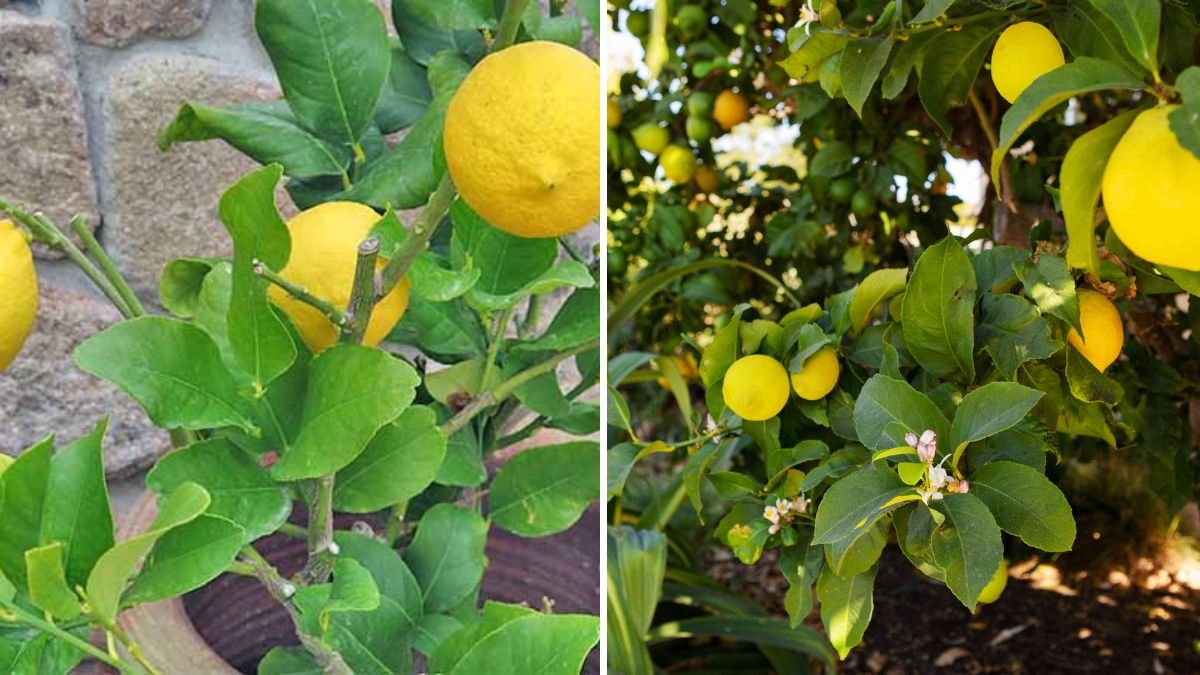Citrus trees—lemons, limes, oranges, and mandarins—are beloved for their fragrant blossoms, glossy foliage, and fresh, zesty fruits. While traditionally grown in orchards or garden beds, mini citrus trees are perfect for container gardening, making them ideal for balconies, patios, and small urban gardens. Growing citrus in containers not only allows for mobility and space efficiency but also offers control over soil quality, watering, and sunlight exposure.
This comprehensive guide explores how to grow mini citrus trees in containers, including selection, care, fertilization, pruning, pest management, and harvesting, ensuring a healthy and productive tree even in limited spaces.
1. Choosing the Right Mini Citrus Variety
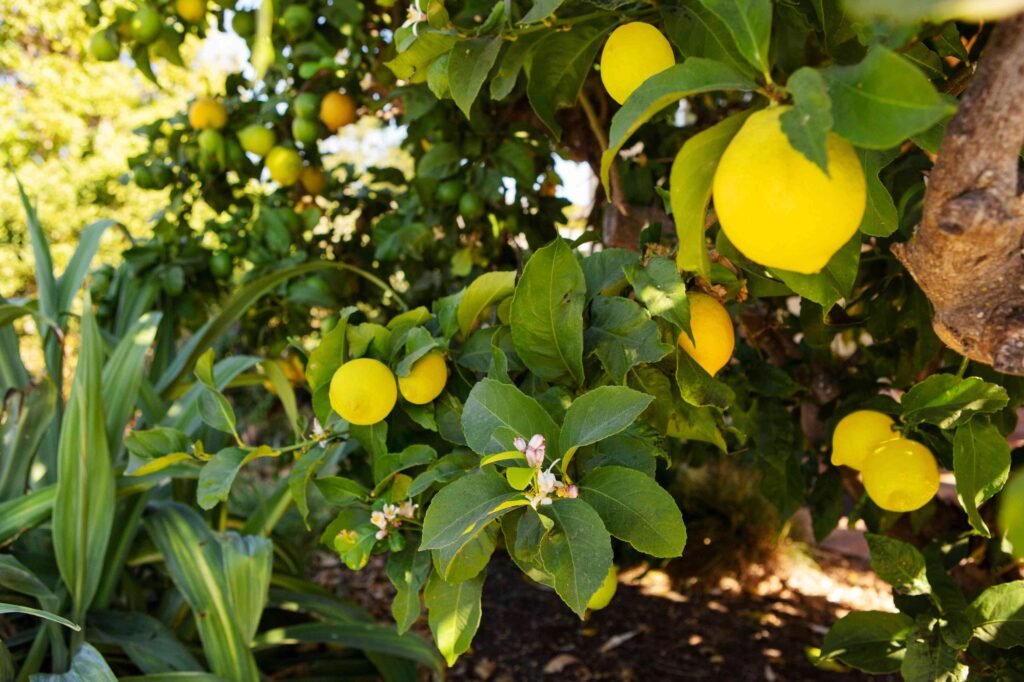
Selecting the right variety is the first step to success:
- Meyer Lemon (Citrus × meyeri): Sweet, less acidic, and compact; ideal for indoor or balcony containers.
- Key Lime (Citrus aurantiifolia): Small, tart fruit; thrives in pots and produces abundant flowers.
- Calamondin Orange (Citrus × microcarpa): Decorative and productive; small orange fruit suitable for indoor spaces.
- Kumquat (Fortunella spp.): Tiny, edible fruits; hardy and easy to manage in containers.
- Dwarf Tangerines (Citrus reticulata): Sweet fruit and small size make them container-friendly.
Tip: Choose dwarf or semi-dwarf varieties as they are naturally suited for container growth and easier to manage indoors.
2. Selecting the Right Container
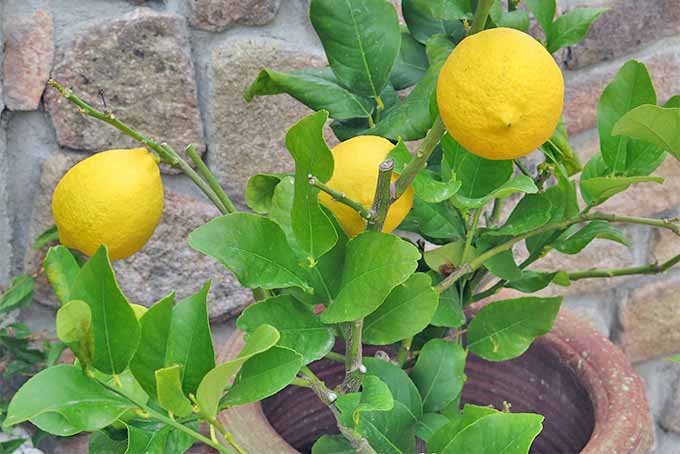
Container choice is crucial for citrus health:
- Material: Terra-cotta, ceramic, or plastic pots work well. Plastic retains moisture longer, while terra-cotta allows better aeration but dries faster.
- Size: Start with a 12–16 inch pot for young trees; gradually increase to 18–24 inches as the tree grows.
- Drainage: Ensure containers have drainage holes to prevent waterlogging and root rot.
- Mobility: Lightweight pots or pots with casters allow easy relocation to maximize sun exposure.
Tip: Use a saucer to catch excess water but empty it regularly to prevent stagnant water.
3. Soil Requirements
Mini citrus trees require well-draining, nutrient-rich soil:
- Ideal Mix:
- 1 part potting soil
- 1 part coarse sand or perlite
- 1 part organic compost or coconut coir
- pH: Slightly acidic soil (pH 6.0–6.5) promotes nutrient uptake.
Tip: Avoid garden soil alone; it retains too much moisture and may harbor pests or pathogens.
4. Sunlight and Placement
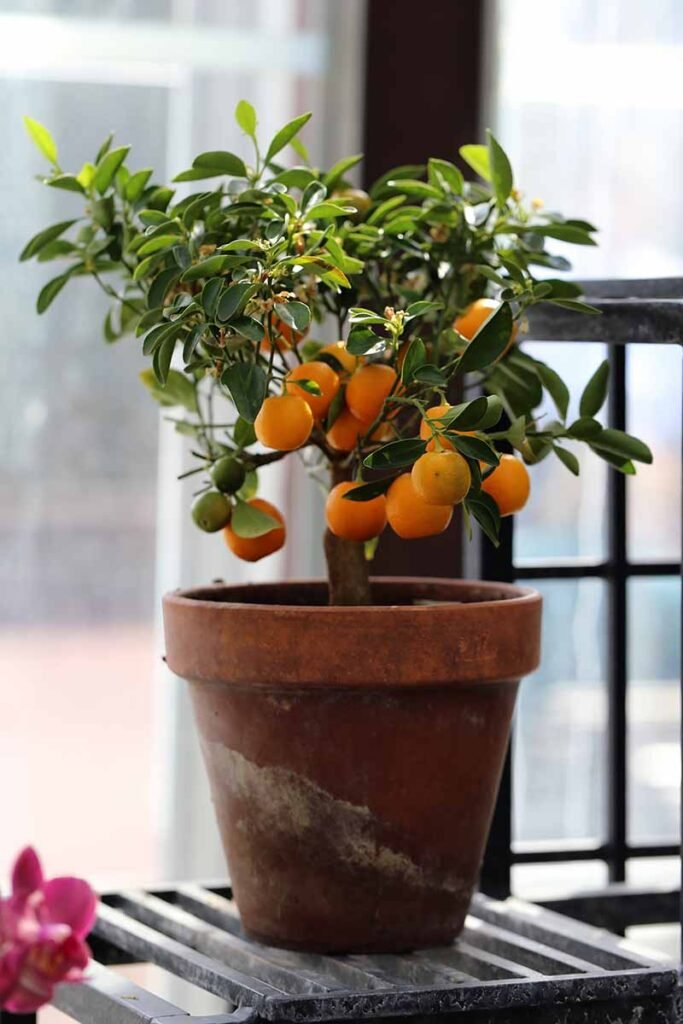
Citrus trees thrive in full sun, requiring 6–8 hours of direct sunlight daily:
- Balcony or Patio: South or west-facing locations are ideal.
- Indoors: Place near bright windows or use supplemental grow lights for at least 6 hours of light daily.
- Rotation: Turn the pot periodically to ensure even sunlight exposure and symmetrical growth.
Tip: Protect from harsh afternoon sun during extremely hot days to prevent leaf scorch.
5. Watering Mini Citrus Trees
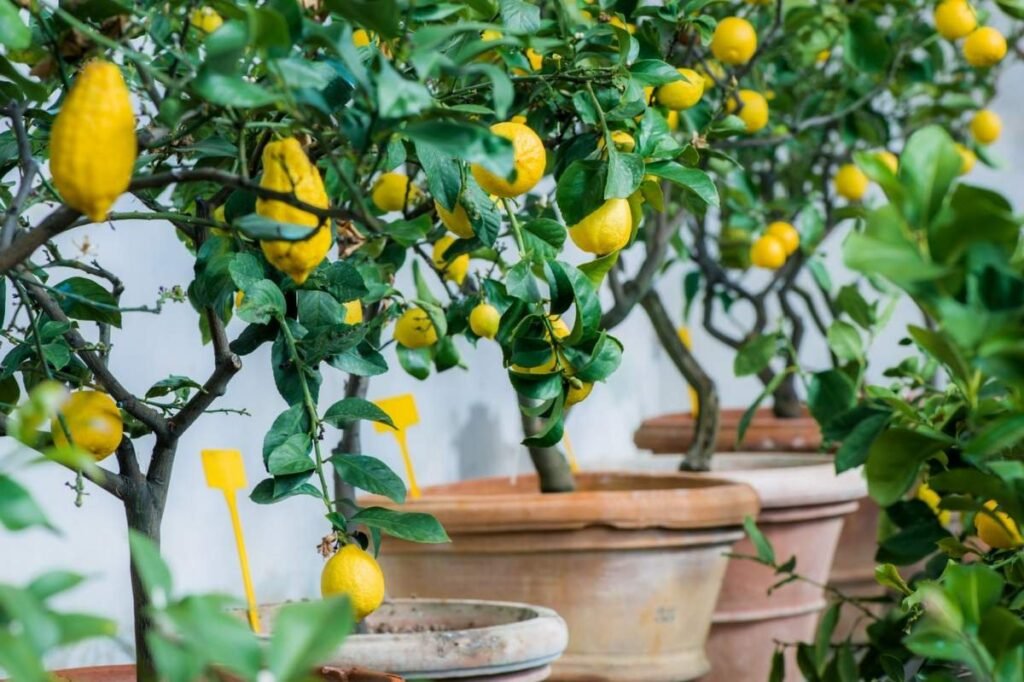
Proper watering is critical:
- Frequency: Water when the top 1–2 inches of soil feel dry.
- Method: Deep watering ensures water reaches the root zone. Avoid shallow, frequent watering.
- Drainage: Excess water should drain freely to prevent root rot.
Tip: Reduce watering in winter when growth slows, but do not let the soil dry out completely.
6. Fertilizing Container Citrus Trees
Citrus trees are heavy feeders, particularly in containers:
- Balanced Fertilizer: Use a citrus-specific fertilizer with NPK ratio of 2:1:1 (Nitrogen:Phosphorus:Potassium) for healthy foliage and fruit.
- Micronutrients: Ensure the fertilizer contains magnesium, iron, zinc, and manganese.
- Frequency:
- Young Trees: Feed every 6–8 weeks.
- Mature Trees: Feed monthly during the growing season (spring to early fall).
Tip: Avoid over-fertilization, which can burn roots and damage leaves.
7. Pruning and Training
Pruning keeps trees healthy and encourages fruiting:
- Remove Dead or Damaged Branches: Prevents disease and encourages airflow.
- Shape the Canopy: Maintain a rounded or slightly open shape for light penetration.
- Encourage Branching: Pinch new growth tips to promote lateral branching and fruit production.
- Timing: Late winter or early spring is best for major pruning.
Tip: Regular light pruning keeps the tree compact and manageable in a container.
8. Pest and Disease Management
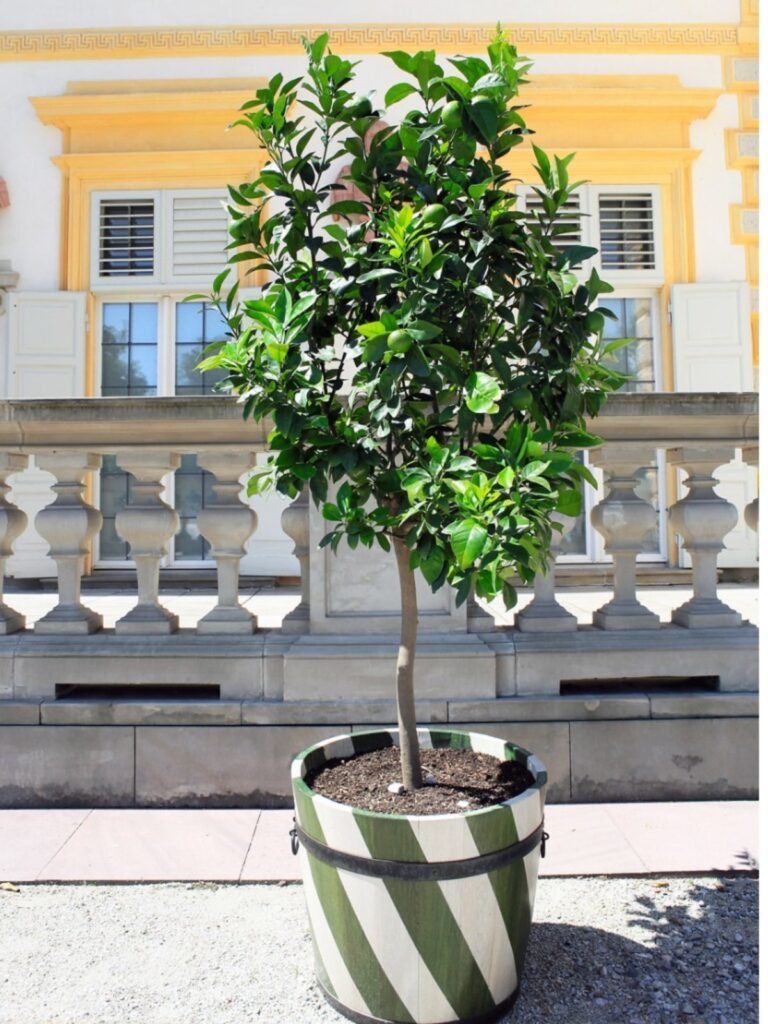
Container citrus trees can face pests and diseases if not monitored:
- Common Pests: Aphids, spider mites, scale insects, and whiteflies.
- Prevention: Inspect leaves regularly, wash off pests with water, and use insecticidal soap if needed.
- Common Diseases: Root rot, leaf spot, and citrus canker.
- Prevention: Proper drainage, avoiding overwatering, and adequate airflow reduce disease risk.
Tip: Isolate new plants before adding them to your container garden to prevent pest introduction.
9. Pollination and Fruit Set
Some citrus varieties are self-pollinating, but assisted pollination can increase fruit yield:
- Indoor Trees: Use a small brush or cotton swab to transfer pollen between flowers.
- Outdoor Trees: Attract pollinators like bees by planting companion flowering plants nearby.
Tip: Encourage fruit set by removing some flowers if the tree produces more than it can support, preventing branch stress.
10. Seasonal Care and Winter Protection
Mini citrus trees in containers need special care during extreme weather:
- Summer: Provide shade during peak heat; maintain consistent watering.
- Winter: Bring indoor trees away from frost; reduce watering slightly.
- Humidity: Citrus trees prefer 50–60% humidity. Mist leaves indoors or use a pebble tray if air is dry.
Tip: Avoid fertilizing in late fall and winter when growth slows.
11. Harvesting Fruits
- Timing: Fruits are ready to harvest when fully colored and slightly soft to touch.
- Method: Use pruning shears or gently twist off fruits to avoid damaging branches.
- Frequency: Harvest regularly to encourage continuous flowering and fruiting.
Tip: Picking ripe fruits promptly prevents overripening and maintains plant energy for new blooms.
12. Companion Plants and Aesthetic Tips
Enhance container citrus growth and balcony aesthetics:
- Companion Plants: Plant basil, marigolds, or nasturtiums nearby to deter pests and attract pollinators.
- Aesthetics: Mix tall citrus pots with trailing plants like ivy or creeping thyme for a layered, visually appealing look.
- Mobility: Use plant caddies to easily move trees for sun, shade, or winter protection.
Conclusion
Growing mini citrus trees in containers allows gardeners to enjoy fresh, aromatic fruits and lush greenery in urban spaces, balconies, or patios. Success depends on choosing the right variety, providing ample sunlight, proper watering, nutrient-rich soil, and regular pruning.
Key takeaways:
- Select dwarf or semi-dwarf citrus varieties suited for containers.
- Use well-draining, nutrient-rich soil and appropriately sized containers.
- Provide at least 6–8 hours of sunlight daily, using grow lights indoors if needed.
- Water deeply and regularly, adjusting frequency by season.
- Fertilize with a citrus-specific NPK formula and include micronutrients.
- Prune lightly to shape the tree, encourage branching, and maintain size.
- Monitor for pests and diseases, and act promptly to prevent damage.
- Assist pollination indoors for better fruit yield.
- Protect trees from extreme temperatures and maintain humidity.
- Harvest fruits at peak ripeness for best flavor and plant health.
By following these guidelines, gardeners can cultivate healthy, productive, and beautiful mini citrus trees that bring color, fragrance, and fresh fruit to any home, transforming even small spaces into a fruitful urban oasis.
